The experience of the surgeons
High Volume Surgeons
Entire surgical range
Quality of vision
State of the art
Equipment, most advanced techniques
FREQUENTLY ASKED QUESTIONS
Euro Eyes answers your questions from A-Z. And if you have further questions, please feel free to make an appointment for a personal and free consultation.
LASER EYE SURGERY
In principle, a defective vision such as nearsightedness, farsightedness or astigmatism is corrected by a computer-controlled precision laser with the aid of an eye laser correction. The cornea is modelled in such a way that the defective vision is corrected and everything can be seen sharply again without glasses or contact lenses. How this works with individual ametropia will be explained later.
Laser eye surgery is performed on an outpatient basis and is painless thanks to locally anaesthetised eye drops; depending on the procedure, it takes only a few seconds to minutes. EuroEyes uses the most modern laser eye correction method, the ReLEx smile method, for the correction of myopia and astigmatism, up to a total of minus 10 dioptres. The ReLEx smile is minimally invasive and is the logical further development of the historical PRK, LASIK and Femto-LASIK procedures. Femto-LASIK is used for farsightedness of up to plus 3 diopters with and without astigmatism.
The laser eye surgery is only useful in a certain indication spectrum which is limited by corneal thickness, pupil size, ablation height and residual thickness of the cornea. You can find out whether this is possible for you in the non-binding eye check. The doctor will determine the most suitable procedure for you together with you in a detailed consultation during the preliminary examination.
In the ReLEx Smile method, a lenticula (correction lens) is generated with the femtosecond laser in the cornea below the nerve fiber layer. This lens is spherical (lenticular) in the case of pure myopia and elysis (egg-shaped) in the case of astigmatism. This correction lens is removed by a small incision (opening) of only 2-4 mm, whereby the cornea flattens out and has the same curvature in all directions. This permanently corrects the defective vision and all images are sharply reproduced on the retina. If the visual defect is higher or the cornea is too thin for laser eye surgery, special lens procedure such as the ICL method is used to correct the visual disorder.
Laser eye surgery for farsightedness up to +3 dpt. and astigmatism up to 3 dpt. The Femto-LASIK method uses a femtosecond laser to generate an approx. 100-120 micrometer small flap on the surface of the cornea and opens it like a book cover. Than the excimer laser is used to ablate the cornea in a computer-controlled ring shape and the cornea is divided centrally if there is a curvature of the cornea, it is corrected at the same time using special ablation techniques. This gives the cornea greater refractive power and the same curvature in all directions. As a result, the defective vision is permanently corrected and all images are sharply reproduced on the retina. If the visual defect is higher or the cornea is too thin for laser eye surgery, special lens techniques such as the ICL method is used to correct the visual disorder.
The preparation time is about 20 – 30 minutes, the treatment itself (where the laser is in use) generally only lasts a few minutes. The entire stay at the clinic is about 1.5 – 2 hours.
In general, we carry out laser treatment up to the age of 50. When presbyopia sets in, from approx. 45 years of age, a correction with the multifocal/trifocal lenses is usually more suitable. We will discuss this with you during the preliminary examination.
As long as your refractive values are stabilized and your fundus shows no changes caused by the diabetes, a laser treatment of your vision is generally possible.
With Femto-LASIK a laser eye surgery method is now available that can treat even thin corneas. Thanks to the innovative femtosecond laser, the Femto-LASIK procedure no longer needs a microkeratome (precision blade), and it is more accurate and further reduces the already very low complication rate. With the femtosecond laser, an approx. 100-120 micrometer small flap is generated on the surface of the cornea and opened like a book cover. Afterwards, the computer-controlled excimer laser is used to remove shapes corresponding to ametropia numbers and thus correct the vision as required. The cornea is given the same curvature in all directions and all images are sharply focused on the retina.
The Wavefront Lasik allows a customized treatment of so-called optical aberrations and complex vision disorders. The revolutionary Laser Eye method Wavefront LASIK is among the laser treatments offered by EuroEyes. A Wavefront Lasik improves contrast sensitivity and alleviates glare at night.
Only the ReLEx smile procedure is safer than Femto-LASIK. In contrast to LASIK, no flap has to be cut here. Instead, a femtosecond laser inside the cornea prepares a so-called lenticula which corresponds to the amount of tissue required to remove to correct your vision disorder. This lenticula is removed through 2 mm opening. This minimal incision places much less strain on the cornea. The procedure can be used to correct myopia and astigmatism and is even suitable for dry eyes.
LENS IMPLANTATION
Intraocular lenses (IOL) are small polymer lenses made of highly biocompatible materials which are used by young patients up to the age of 45 as a phakic lenses in addition to the body’s own lens when the ability of the eye lens to accommodate is maintained (close distance) or when the ability of the eye to accommodate diminishes in patients from the age of 45 as a replacement for the body’s own lens (refractive lens replacement RLE). Almost any visual disorders can be corrected with intraocular lenses.
Myopia and farsightedness is corrected with a spherical IOL, toric IOL is used for astigmatism correction and presbyopia is corrected by multifocal IOL (trifocal lenses). There are two different types of phakic intraocular lenses: phakic anterior chamber lenses (pVKL, Verisyse/Artisan) & phakic posterior chamber lenses (pHKL, Visian ICL). Monofocal lenses and multifocal lenses (Zeiss trifocal lenses) are used for refractive lens exchange (RLE). All intraocular lenses are also available in the toric version, which at the same time also correct astigmatism. The IOL artificial lens remains permanently in the eye and you no longer have to wear glasses or contact lenses.
The ICL (implantable contact lens) is a clear polymer lens that resembles a contact lens. Unlike a contact lens, the ICL is inserted into the posterior chamber of the eye between the iris and own eye lens. It is called a phakic lens because it is inserted in addition to the body’s own lens. The ICL remains permanently in the eye and is neither visible nor perceptible. Together with the body’s own natural lens, the ICL ensures that the light is bundled correctly in the middle of the retina and corrects ametropia.
The ICL is small and extremely soft, it can be easily folded and gently placed in the eye with an injector within seconds – through a small incision in the cornea. In the latest form of ICL that we use at EuroEyes, this has a small opening (Aqua Port) so that the aqueous humor can flow freely between the anterior chamber (in front of the iris) and the posterior chamber (behind the iris) without further measures. After the ICL treatment, the patient can see sharply again – without glasses or contact lenses.
Where laser treatment is no longer sufficient, for example in the case of more than -10 or more than +3 dioptres and if the cornea is too thin, phakic intraocular lenses such as ICL are a good alternative. ICL is mainly used to the young patients up to the age of 45, as the ability of the body’s own lens to accommodate (adjust) is not impaired. Thus it is even possible for people with extremely high visual disorders to live permanently without glasses or contact lenses until the onset of presbyopia from approx. 45 years of age.
No, you will neither feel it, nor be able to see the intraocular lens.
There are two different types of Phakic Intraocular lenses: anterior chamber lenses and posterior chamber lenses.
The anterior chamber lens is implanted in front of the iris in the anterior chamber.
The posterior chamber intraocular lens is placed behind the iris and in front of the natural lens. It consists of Collamer, which is a biocompatible polymer.
The posterior chamber depth must be at least 2.8 mm.
An anterior chamber depth of minimum 2.7 mm. (Not for farsighted and no toric correction is possible.)
GENERAL QUESTIONS
The first step is an initial consultation and examination. At the initial consultation we see if you are a suitable candidate, which method fits your eyes best, and how much the cost will be. If you are a suitable candidate and decide to proceed with a vision correction, the next step is the big preliminary examination. At this preliminary examination you need to have taken at least a 1 week break from soft contact lenses, and a 2 week break from hard contacts. We will also dilate your pupils with eye drops on the day of the examination to look into the background of your eye.
Please bring your sunglasses, as you can be slightly sensitive to glare after this appointment. For the appointment you should plan for approximately 1.5 to 2 hours. The eye drops that we use to keep dilation usually last approximately up to 24 hours, which means that you can no longer drive your car or any other vehicle on that day. Within the following six weeks, we will then carry out the correction. After the surgery a minimum of 3 follow-up examinations are required. One day after surgery, one week after, and a monthly check.
Due to local anesthetic eye drops, you will only feel a light pressure during the treatment. Rarely, minor pain can occur after the treatment and is expressed through tears and foreign body experience. After the treatment you will be given an emergency number that you can reach the doctor on duty after the treatment, who will then tell you what to do.
The Laser treatment is carried out on the corneal surface, and has therefore no effect on a possible cataract surgery.
After the detailed preliminary examination the treatment should happen within the next six weeks.
Your values must have been stable for at least one year prior to a laser or lens treatment.
A laser treatment is not possible before the age of 18. The requirements are stable refractive values over the previous year.
In our warranty, three examinations are included as well as a follow-up treatment within a year if necessary!
The costs of a laser eye treatment fully or partially are covered by some private health insurance companies. It is best if you contact your health insurance directly, to find out more about this. Generally, the statutory health insurance unfortunately does not cover the cost of laser eye surgery.
As a rule, you will be able to see 80-90% of what you were able to see with your visual aids the day after the operation and within 3 days you will have full visual acuity.
The risk of complications is very low, thanks to the high quality and hygiene standards at EuroEyes. Real complications are extremely rare. To ensure an optimal healing process, it is extremely important that the patient comes to the follow-up exams, and meets the exact specifications of schedule for eye drops that follows the instructions they received from us after the treatment. The side effects that can occur with laser vision correction are typically only temporary and harmless, and are fully treatable.
You can fly short and long distances after appr. 3-4 days.
No, you can’t. Because we treat the top layer of the cornea never get in contact with the optic nerve.
After about two weeks, endurance sports are possible again without restrictions. We recommend eye make-up, swimming or sauna in moderation, after about three to four weeks.
As soon as you see more than 70%, you are allowed to drive again. You will find out exactly when you can drive again from your EuroEyes doctor. You will then receive a temporary certificate from us that you are allowed to drive without visual aids. After one year the entry can be deleted from the driving licence. As a rule, driving a car is possible again after 5-7 days at the latest.
Cataract cannot be treated with our laser treatment. Instead we recommend a replacement of your natural lens with an artificial lens.
Symptoms of age-related visual impairment (aka. presbyopia) can be greatly reduced by a different treatment approach. For the nearsighted patient, this means that one eye is not fully corrected, so that objects in the vicinity can still be seen clearly. This approach is called “monovision”. Multifocal intraocular lenses like the bifocals allow seeing both near and far away. Here the body’s natural lens is replaced with a multifocal lens.
Whether your health insurance takes care of laser treatment costs, and which conditions are required for this to happen, all depends on your health insurance, it’s best to contact your insurance directly about this.
At EuroEyes we, as a rule, perform laser eye surgery by nearsightedness up to -10 diopters, farsightedness up to +4 diopters and astigmatism up to 4 diopters. The patient must be at least 18 years of age and the diopter values must have been stable for at least one year. Also the thickness of the cornea is important, it should be at least 480 microns. Moreover, no eye diseases such as Keratoconus, cataract or glaucoma should be present. Whether treatment is medically justified is always decided by the treating specialist through a detailed preliminary examination.
We offer those interested a free and noncommittal information session on a date of their choice. This involves an overview of all relevant eye parameters as well as a suitability test performed by a refractive coordinator. We determine whether the personal refractive error can be corrected with a laser treatment, and if so, which one of our available methods are most applicable. It is important even at this appointment, to take the personal habits and circumstances of each individual into account.
WHY SHOULD I CHOOSE A RELEX SMILE TREATMENT INSTEAD OF LASIK?
The corneal opening of the ReLEx smile method is significantly smaller (2 mm) than with LASIK (20 mm). The cornea remains stable and the tear flow remains intact
Although flap complications are very rare with a LASIK incision, they are completely excluded with a ReLEx smile treatment due to the keyhole technology.
With the ReLEx smile procedure, the surgeons work with the so-called keyhole technology. The cornea remains stable and the flow of tears is hardly disturbed compared to LASIK.
The ReLEx smile laser procedure requires only a tiny opening of approx. 2 mm in the upper corneal layer (keyhole technology). In comparison, conventional LASIK prepares a lid (flap) of about 20 mm.
The ReLEx smile procedure exclusively uses a femtosecond laser (VisuMax from Zeiss). The femtosecond technology is regarded worldwide as the most modern, safest and most precise method for the correction of ametropia.
The ReLEx smile procedure is suitable for patients with even higher ametropia, thinner cornea or dry eyes. Shortsighted patients up to -10 diopters can be treated with the ReLEx smile procedure. With Femto-LASIK, treatment was only recommended up to a maximum of -8 diopters. A thinner cornea (min. 480 micrometers) is also no problem because the cornea remains fully intact with the ReLEx smile procedure and the tissue ablation is not as deep.
In contrast to Femto-LASIK, the nerves in the upper corneal layer that are necessary for the regulation of the tear film are largely retained, which reduces the risk of dry eyes after the operation. A further advantage is that pain or a strong feeling of a foreign body on the cornea is hardly to be expected with smile, since laser treatment takes place inside the cornea.
FREQUENTLY ASKED QUESTIONS CONCERNING "RELEX SMILE" TECHNOLOGY
A minimum age of 18 years is required for eye laser treatment.
After about two weeks, endurance sports can be resumed without restrictions. We recommend eye make-up, swimming or a sauna in moderation, after about three to four weeks.
It would be desirable that prior to the operation, your vital signs should have remained stable during one year.
As a rule, you can already see 80-90% of what you were able to see with your poor eyesight the day after the operation and within 3 days you will have full visual acuity.
In EuroEyes, the most careful attention is paid to the unswerving compliance with the highest requirements for the quality of treatment and hygienic standards, so the percentage of the complications, caused by the laser vision correction, is extremely low. True complications are extremely rare. Clear and faithful patient compliance concerning the follow-up appointments is particularly important to provide the optimal healing process. The prescribed eye drop regimen should be strictly observed, as well as the recommendations given to the patients by the staff of the medical institution for the postoperative period should be followed. Side effects ( adverse events ) that may occur from time to time in the laser vision correction are usually short-term ones, they do not cause any serious concerns and are completely treatable.
MULTIFOCAL/TRIFOCAL LENSES
The trifocal/multifocal lens (M-IOL-Tri) is a highly developed artificial lens that has several focal points and thus enables vision at different distances without varifocals and reading glasses. These well-tolerated multifocal lenses can stay in the eye permanently and are not visible. The most modern multifocal lenses are so-called trifocal lenses. With these lenses one can see well in the near, in the distance and in the intermediate area. It is also possible to work on a computer without any problems. In addition to presbyopia, artificial lenses can be used to correct nearsightedness, farsightedness and astigmatism.
The insertion of trifocal/multifocal lenses, also known as trifocal/multifocal intraocular lenses, is a safe and precise method of correcting presbyopia. The natural lens of the body is replaced by an artificial lens (multifocal lenses). This refractive lens replacement (RLE) is a highly proven and tested procedure and has been used for decades in the treatment of cataracts. The surgeon inserts the new lens into the eye with an injector. The lens unfolds and is placed correctly in the empty lens sheath by the surgeon. In addition to presbyopia, the trifocal/multifocal lens can also correct other defective vision such as nearsightedness, farsightedness and astigmatism.
For patients who have already reached presbyopia, which is usually noticeable between the ages of 40 and 50. Suddenly the arms are no longer long enough to hold a newspaper or a book so far away that the letters are sharply recognizable – reading glasses are needed. People who are already nearsighted or farsighted in younger years are also affected by presbyopia over the years.
Trifocal/multifocal intraocular lenses (M-IOL) distribute the incident light over several focal points, enabling sharp vision for reading and for distance and intermediate distance.
Trifocal / multifocal artificial lenses lead to a certain reduction of the image contrast. Therefore, at dusk, halos around light sources are often described. On the other hand, our brain learns to deal with these changes so that they are usually no longer perceived after a short time.
LASER LENS SURGERY
Before refractive treatment, the eye is measured with various diagnostic devices to determine the refractive power of the artificial lens. The optimal visual result requires an exact positioning of the lens. Even the smallest deviations lead to suboptimal visual quality. With the high precision of the laser, exact implantation is much safer than with manual incision.
Among other things, the LenSx® laser cuts up the natural lens and thus facilitates the removal of the lens by the surgeon. In order to aspirate it, it requires around 40 % less ultrasound energy than without the laser.
Since the femtosecond laser can cut much more accurately than an experienced surgeon, the procedure is considered safer compared to manual cataract surgery. In addition, the video-supported OCT control allows the exact planning of the incisions as well as the more precise alignment of the artificial lens, so that in a considerably larger percentage a better visual result was achieved with presbyopia.
KERATOCONUS
The word Keratoconus derives from two Greek words: “kerato”, which means cornea, and “conus”, which means cone. Keratoconus is a genetically inherited disease that affects the normal form of the corneal structure, causing it to lose its stability and bow forward irregularly, resulting in a reduction and distortion of vision. Generally one eye is more affected than the other.
In the early stages, glasses will do the trick. However, at some point the glasses are no longer sufficient and it is common to wear hard contacts. When the contact lenses have become intolerable, kerarings are implanted. These kerarings (intracorneal Ring segments) can stall this progressive protuberance of the cornea, and thereby significantly postpone the need for a corneal transplant. In case it does come to this stage, we offer corneal transplants in our clinic in Munich. So far, a cornal transplant has been necessary for more than 20% of all patients.
A keraring is a polymer ring consisting of two semi-circular segments with a diameter of 5 mm and a variable thickness. The kerarings are made from Perspex CQ Acrylic, the same material as the inraocular lenses used for cataracts. The kerring is tolerated by the cornea and there is no risk of repulsion. The main reason for surgery is to improve visual acuity. Kerarings can usually stop the progression of the keratoconus and thus delay the corneal transplantation indefinitely. If the Keraring is seated, a crosslinking (collagen cross-linking) is often performed to stabilize the keratoconus.
medium to high shortsightedness
high astigmatism
Irregular astigmatism in case of keratoconus or after corneal transplantation.
Keraring flattens the cornea and eliminates corneal irregularities. This not only reduces the protrusion but also the myopia and astigmatism.
First the visual axis is marked on the cornea, then a tunnel is prepared using the femtosecond laser. The femtosecond laser places the incisions very precisely in six seconds. The rings are inserted into the tunnel and a bandage contact lens is inserted.
The risks are quite low, however any operation can result in an infection. If this were to happen, the kerarings would have to be removed. This is also necessary if the kerarings migrate out of the tunnel. Despite surgery, corneal transplantation may be necessary at a later date. Keraring is not a substitute for corneal transplantation.
The eye recovers very quickly, visual acuity stabilizes within a few days and improves over 3 to 6 months. Fluctuations in vision in the first few weeks are quite normal. Often vision is better in the morning and slightly blurred in the evening. Since it is not a cosmetic correction, it may still be necessary to wear glasses or contact lenses in order to completely correct the defective vision. In spite of a residual defective vision, visual acuity can be very good.
CATARACT
An operation can achieve significantly better visual acuity if the appropriate conditions are met.
No! Due to the local anaesthesia, the patient’s organism is hardly affected.
The local anaesthesia (often only a drop anaesthesia) makes the eye and its surroundings insensitive, so that the operation causes hardly any pain.
The eye operation takes about 15 to 30 minutes.
The artificial lens is made of very well-tolerated polymer, there are practically no rejection reactions.
No. Unlike a contact lens, the artificial lens does not cause any foreign body sensation or even intolerance.
The healing process is usually completed from four to six weeks after the operation. Normally, the protective bandage can be removed on the next day.
Cataract (opacity of the lens) cannot be corrected by the laser eye surgery. In cataract surgery, the body’s own lens is replaced by an artificial lens. We also offer this procedure.






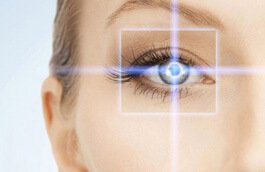

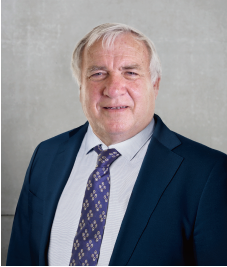



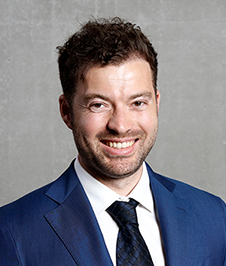
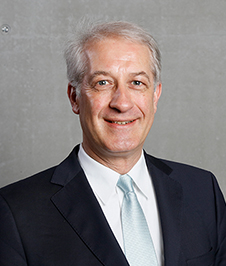

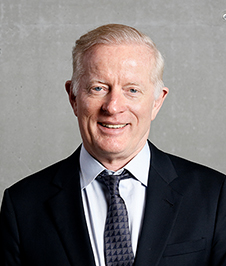


Join our Newsletter